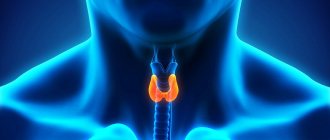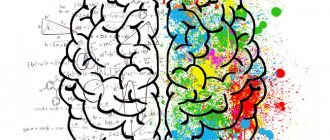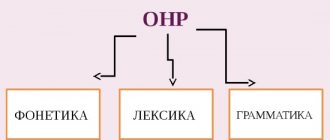Dysphonia is a voice disorder in timbre, strength or pitch. With this condition, the voice may be weak, hoarse, or slurred. This condition develops against the background of local damage to the muscles of the vocal apparatus or speech centers of the brain.
Depending on the affected area, the pathology clinic and prognosis when prescribing treatment may vary. Only a competent speech therapist and speech therapist in Moscow will make an accurate diagnosis and prescribe therapy.
Dysphonia can develop due to congenital disorders; organic lesions can predispose to pathology. Many patients have a family history, but this does not mean that the disease is incurable. Patients who immediately began undergoing training successfully master normal speech.
Dysphonia can be recognized by the following clinic:
- the voice may be too quiet or loud at first, but fade away during the conversation and become hoarse at the end;
- conversational speech can be monotonous, monotonous, unemotional;
- Often there is noisy and wheezing breathing, which is heard during a conversation.
Hypotonic dysphonia
The word “hypotonicity” means weak tone, in this case, of the muscles of the larynx. In simple terms, the muscles of the speech apparatus contract with insufficient strength, which leads to a weak or hoarse voice, speech becomes illegible and poorly understood.
The cause of hypotonic dysphonia is organic in nature; it develops when the muscles of the larynx themselves or the nerves that control the contraction of these muscles are damaged. Before treatment, an examination by an otolaryngologist and a neurologist is required to exclude pathology. Only with a comprehensive diagnosis can the exact cause of the disease be determined.
Treatment
Treatment should be comprehensive and include both local, which consists of sanitizing foci of infection, and general somatic treatment. It is aimed at increasing the endurance of the voice-producing apparatus and developing stable phonation skills. Treatment without the use of medications includes:
- Carrying out phonopedia - pedagogical education of correct voice production;
- Breathing and articular gymnastics;
- Acupuncture and physiotherapy, which include procedures such as dynamic currents, electrophoresis on the larynx area, amplipulse (pulse current treatment)
- Psychotherapy;
- Massage of the collar area.
During drug therapy, stimulant drugs are prescribed. In cases of severe and persistent hypophonia, implantation therapy is used.
Functional dysphonia
This disease develops due to dysfunction of the laryngeal muscles without organic pathology. In functional dysphonia, there are no anatomical changes in the vocal cords, and speech problems arise due to their weak or incomplete closure.
The reasons can be very different - congenital features of the speech apparatus or problems of central origin. In the latter case, a disorder of muscle innervation occurs due to stress, psycho-emotional stress or damage to peripheral nerves. The exact cause can only be determined through clinical examination.
Clinical picture
Functional dysphonia has the following forms:
- Hypotonic or hypokinetic, hypofunctional;
- Hypertonic, by analogy hyperkinetic, hyperfunctional;
- Hypo-hypertonic, otherwise called vestibular-fold and false fold voice.
With hypotonic dysphonia, a violation of vocal function occurs due to a decrease in the tone of the vocal folds and some other muscles that take part in the formation of the voice. Patients experience hoarseness and rapid fatigue of the vocal apparatus.
The appearance of hypertonic dysphonia is caused by an increase in the tone of the vocal folds. Voice formation occurs with strong tension in the neck muscles, the voice becomes sharp and very hoarse.
Hypo-hypertonic dysphonia occurs when, along with a decrease in the tone of the vocal folds, phonation is formed at the level of the vestibular folds, which then becomes the cause of their hypertrophy.
Aphonia is the absence of a sonorous voice, but a whispered speech is preserved. Aphonia or psychogenic dysphonia occurs mainly under the influence of psychogenic factors. Mutational dysphonia occurs during the period of mutation (age-related changes) of the voice.
Friends! Timely and correct treatment will ensure you a speedy recovery!
Spasmodic dysphonia is characterized by tremors, severe hoarseness, and slurred speech. It can occur in the abductor (when the vocal folds open) and adductor (the vocal folds close) form.
Make an appointment right now!
Call us by phone or use the feedback form
Sign up
Spasmodic dysphonia
With such dysphonia, a spasm of the muscles of the larynx occurs, resulting in problems with the voice. Due to muscle overstrain, hoarseness is observed, and the voice may be completely absent. This condition occurs due to muscle spasm, for example, during prolonged singing or after reading a lecture. Spasmodic dysphonia usually goes away after rest, and consultation with a specialist is often required.
Often, with spasms, disturbances occur in the psycho-emotional sphere - due to fear, it becomes difficult for patients to talk and breathe normally. Due to twitching of the diaphragm, breathing is disrupted and various side sounds appear.
Causes and course of the disease
One of the reasons for the occurrence of functional dysphonia is considered to be structural features of the vocal apparatus, which can be anatomical, congenital and constitutional. In addition, this disease can occur with voice overexertion, asthenic syndrome (chronic fatigue) of various etiologies, as a complication after respiratory diseases, under the influence of psychotraumatic influences. The following factors can have a serious impact on the occurrence of such a disorder:
- Surgical operations on the larynx;
- Forced long silence;
- Hormonal disorders;
- Parkinson's disease;
- Traumatic brain injuries;
- Disturbances in cerebral circulation;
- Myasthenia gravis (muscle weakness).
Functional dysphonia is a reversible disorder. However, with a long course, it can cause the development of atrophic laryngitis, the formation of pseudofold phonation, which sometimes causes hypertrophic (pathological enlargement) changes in the vestibular folds. Hyperkinetic (or spastic, that is, caused by voice overexertion) dysphonia often leads to persistent disruption of microcirculation of the vocal folds, which causes ulcers, polyps, nodules and other pathologies in the larynx.
The causes of spasmodic dysphonia, when the vocal folds move involuntarily, are currently not fully understood.
Hypertonic dysphonia
This form of dysphonia develops due to overstrain of the vocal muscles, which are responsible for generating sounds. Due to the high tone, tension in the neck muscles is noted, the phonation is sharp, and pronounced hoarseness is observed. Hypertonic dysphonia in severe cases may be accompanied by shortness of breath with dry wheezing due to narrowing of the glottis.
Sometimes patients need urgent help - the earlier treatment is started, the easier and faster it is to restore a normal voice. Muscle contraction also develops with certain diseases of the larynx or with psycho-emotional stress.
Is it possible to restore voice function with Dysphonia?
To restore voice function, the help of a speech therapist is needed. During a diagnostic examination, a specialist determines which aspects of voice-forming activity are impaired; draws up an individual recovery program; conducts individual classes (procedures), including breathing exercises, speech and vocal exercises, speech therapy massage, vibration stimulation of speech and neck muscles. If necessary, initiates drug therapy (consultations with a neurologist, psychotherapist). The methodology and duration of classes are determined individually.
The sooner the patient is referred to a specialist for help, the sooner he will reach the maximum level of social functioning, thus improving the quality of life.
Speech therapy service of the State Clinical Hospital named after. S.S. Yudina
Organic dysphonia
With organic dysphonia, various pathologies of the speech apparatus are present: inflammation of the tonsils, cysts in soft tissues, neurological disorders, etc. All diseases can be confirmed by clinical examination of the patient. If such a diagnosis is made, mandatory treatment by a specialized specialist is required: otolaryngologist, neurologist, oncologist and other doctors, depending on the type of pathology.
Consultation with a speech therapist is necessary to restore normal speech in case of organic dysphonia. In severe cases, several courses may be required; rehabilitation is prescribed only when treating the underlying pathology.
Survey
Patients who have problems with their voice should visit an otolaryngologist-phoniatrist. Also, if indicated, consultation with a neurologist, endocrinologist, or psychologist is necessary. To clarify the diagnosis you will need:
- endoscopy of the larynx;
- acoustic voice analysis;
- electroglottography;
- electromyography;
- blood analysis;
- bacterial culture from the nasopharynx;
- biopsy;
- tracheoscopy.
It is also necessary to be examined by a speech therapist. For functional dysphonia, treatment is prescribed by a phonopedist. Diagnostics will help to clearly determine the subtype of the disease, which is important for determining treatment tactics. Our Center’s specialists are ready to accept patients with this disease and provide the necessary assistance.
Mutational dysphonia
Mutational dysphonia usually occurs in boys during puberty, when the voice “breaks” and becomes rougher. The reason is various functional changes in the speech apparatus due to hormonal changes. If these processes occur significantly and disrupt normal speech, it is recommended to consult a specialist.
A speech therapist will help the child quickly adapt to such changes; with the help of training, speech can be maintained within acceptable limits. If due to dysphonia there is a loss of voice or its quality is impaired, a specialist will help you quickly rehabilitate in a difficult situation.
Forecasts
Dysphonia goes away forever if help comes on time and the rehabilitation plan is drawn up correctly. Difficulties arise if the patient is again faced with a traumatic factor, if psychological problems are added to this (lack of faith in one’s own strengths and the possibilities of therapy), or if the treatment process has been delayed.
The NeuroSpectrum Center for Children's Speech Neurology and Rehabilitation offers a full examination for the presence of dysphonia, consultations with specialized specialists, as well as comprehensive treatment. Together we will restore the voice, return its timbre and tonality.
Psychogenic dysphonia
With psychogenic dysphonia, there is a deterioration in the voice up to its loss due to some psychogenic reasons. Usually, when exposed to a stress factor, a person begins to become very worried and worried, after which problems with speech appear. In terms of symptoms, they resemble hyperfunctional dysphonia with unstable speech and typical squeezing.
In the psychogenic form of the disease, a mandatory consultation with a psychologist or psychiatrist is required. Doctors set themselves the goal of stopping and, if possible, eliminating a negative reaction to the stimulus. A speech therapist will help with restoring normal speech and returning to normal communication.
Speech specialists are engaged in the diagnosis and professional correction of speech disorders. We will determine the cause of dysphonia and help restore speech without drugs or hypnosis.
Diagnostics
A characteristic symptom of functional dysphonia is prolonged impairment of voice function.
Voice deterioration can occur after a viral infection, severe vocal stress, or as a result of a deterioration in general health. To diagnose voice disorders, there are special texts that need to be read for 40 minutes. In addition, there is psychological testing that is performed in order to identify somatoform disorders (perceived by the patient). While listening to speech, experts pay attention to strength, timbre, diction, posture, the condition of the neck muscles and some other signs. In order to make a final diagnosis, it is necessary to conduct a number of studies: laryngosmicroscopy, acoustic and spectral computer analysis of the voice, electromyography, glotography, and assess the function of external respiration.
In hypotonic dysphonia, incomplete closure of the glottis is observed during phonation. The hypertonic form is characterized by hyperemia (redness) of the mucous membrane, hypertrophy of the vestibular folds, as well as excessive closure of the vocal folds. In some cases, during phonation, you can see the closure of not the vocal folds, but the vestibular folds.










